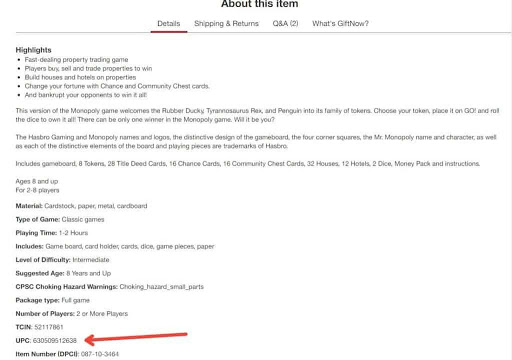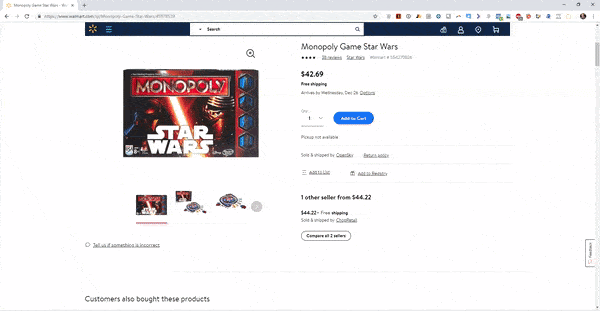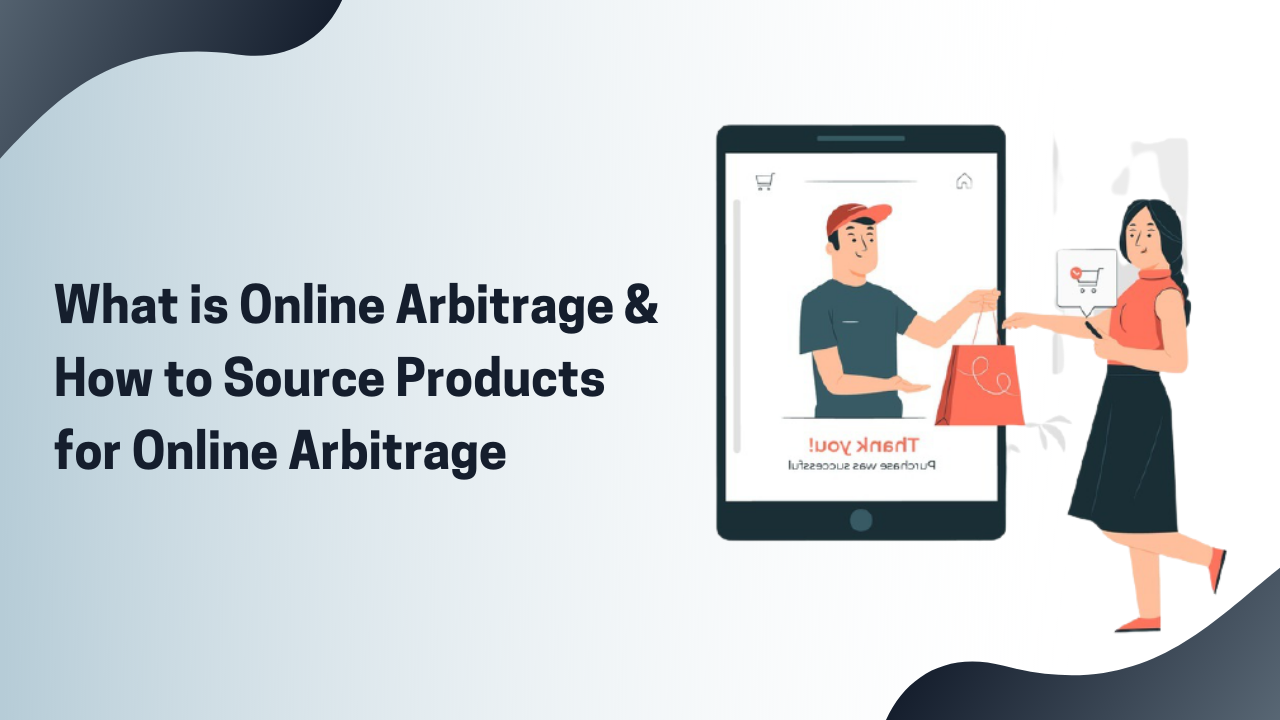What is Online Arbitrage and How to Source Products for Online Arbitrage
Online Arbitrage relates to purchasing products from websites and selling the same products for profit through other online platforms. The most official sources of purchasing items are the websites of major retailers like Home Depot, Target, Walmart, etc.
What is Online Arbitrage?
Online Arbitrage (OA) is a simple way to make money. It is an act of purchasing products from online retailers (like Walmart or Target) and then selling them for a profit from another marketplace such as (Amazon or eBay).
Only you have to purchase cheap (less cost) goods from an online store to sell at a good profit.
“Online Arbitrage means Buying low from an Online retailer and Selling with good profit at online marketplace.”
You can sell your products purchased via online arbitrage at several online marketplaces. These include Amazon, eBay, Target, Walmart.com, Etsy, Craigslist, Facebook Marketplace, OfferUp, Let Go, and many more.
Some people think it’s a “get rich quick” plan or scheme, but it is not as easy as it seems. The key to successful online arbitration is to use resources, tools, data, and a systematic approach to finding the right products, knowing the sales and margins, and selling at a profit.
If you are familiar with the term “Retail Arbitrage” (RA), You can easily understand Online Arbitrage (OA). Retail Arbitrage sources products from offline stores, and OA sources products from Online stores.
For retail arbitrage, the source is a brick-and-mortar shop, such as a retail chain, an outlet store, or even a neighbor having a yard sale. In contrast, the source for Online Arbitrage is online retail platforms. OA does not require a special Wide-scale license. You’re just shopping online but reselling your products on Amazon for a profit.
Here is a quick summary:
How does Online Arbitrage Work with Amazon FBA?
- Search a retail website to find products.
- Select the products you can buy from there for a low price to resell on Amazon for a higher price.
- Place the order of your selected items and let the retailer deliver them to your door.
- When your inventory arrives at your door, unpack your order, list them on Amazon, and then ship them to an Amazon FBA Fulfillment Center
Let’s understand online arbitrage work with Amazon FBA through an infographic-

Like, every other business Online Arbitrage also has its own pros and cons.
Pros of Online Arbitrage
- No driving around town looking for an inventory (It can be difficult for people with full-time jobs).
- The product delivers to your door (you get free packing materials).
- You can order more items than are generally available on store shelves.
- Much easy to manage (because in a single online sourcing session, you could easily spend thousands of dollars on inventory).
Cons of Online Arbitrage
- Need a high level of research and product knowledge due to many stores available for source.
- Regular interaction with Keepa (Amazon price tracker), prices may drop on Amazon before your inventory even arrives.
- Purchased or selling products don’t match the Amazon listing every time (if the retailer’s website doesn’t list the UPC).
- Profit margins are sometimes less than Retail Arbitrage.
Online Arbitrage For Amazon FBA
Business revenue from online arbitrage has been substantially higher on Amazon than in other trading platforms over the years of online sales. This is why we are concentrating on selling products purchased on Amazon through online arbitrage.
You must have an “Amazon Seller account” to sell on Amazon. If you’re unfamiliar with Amazon sales, continue reading “Start Selling on Amazon.” It’s a step-by-step guide covering everything from Amazon sales to setting up your Seller account.
How an Online Arbitrage is Profitable?
Online Arbitrage is a profitable way to make money because you purchase products at a slightly lower price relative to whether you will sell them on different online platforms. But, remember you have to pay marketplace fees and shipping costs too.
For beginner, let’s assume you purchase an item from Walmart for $18, which is selling on Amazon for $43.99. After a customer purchases your item, Amazon will pay you $33 after all the fees and shipping costs. In this case, you’d make a $15 profit on your initial $11 investment. That is how an Online Arbitrage works on Amazon.
Are you planning to launch your Amazon store? Ask us how to start an Amazon FBA business quickly and run successfully. We provide complete Amazon seller account management services, from setting up your Amazon store to Selling on Amazon.
Next, you’ll learn how to start an Online Arbitrage business. Most significantly, you will learn how to source profitable products for online arbitrage.
Get Started with Online Arbitrage Sourcing
The first step to getting started with online arbitrage is to set up an account for Amazon sellers. You will use the account on the website to sell products (recommend using an “Individual Seller Account” when you sign up for your account).
“The individual seller account has no monthly fees and is ideal for new Amazon sellers”.
Now, you must fill out other forms to get your account active. It will take less than 10 minutes to fill out the form. Amazon will need to review your application.
When your account is approved, you can start selling on Amazon.
Product Sourcing Tools For Online Arbitrage
TOOLS TO SAVE YOUR TIME AND MONEY
The primary requirements for online arbitrage are an Amazon seller account, a phone, internet access, and some money for inventory spending. Many other tools and stuff are helpful, but you only need a little to get started.
Online arbitrage product sourcing tools help you to find good deals to sell at a better profit margin. Use product sourcing tools to:
- Scan products, online marketplaces, directories, and other online tools through suppliers.
- Check product pricing from multiple Amazon FBA suppliers and retail stores.
- Find the best deals by product, category, and marketplace.
- Filter products based on price, availability, demand, and profit margin.
5 Most Powerful Tools For Online Arbitrage
1. Tactical Arbitrage
Tactical Arbitrage is an online selling tool that focuses on the Amazon marketplace. Features include:
- Finds specific store categories and URLs.
- Filter products on the basis of various factors including ROI and sales ranking.
- Find products where you will make the most profit.
- Carry out a reverse lookup for Amazon products.
- Scan over 1,000 product sourcing websites.
2. BuyBotPro
BuyBotPro features an online arbitrage virtual assistant. It is developed to analyze all of your FBA sourcing and purchasing needs. Features include:
- Automatically analyzes multiple deals and provides suggestions on the best deal.
- ROI and profit margin analysis that shows your profit after possible deductions.
- Demand analysis based on selling rank so you can find items that can sell easily.
- Competition analysis to show how other marketplace sellers are selling your products.
- Inventory analysis so you can purchase and sell the exact number of goods.
3. SourceMogul
SourceMogul is a professional search engine or tool that finds products that you can sell on Amazon with good profit. Users who trade on Amazon developed this app to support other arbitrage sellers. Features include:
- Do specific searches and analyze each category and niche.
- Take your inquiries and SourceMogul will run them in the background and show results as they are ready.
- Detailed results analysis with advanced filtering criteria.
- Sales rank and pricing histories for every product.
- Brand restrictions checker to remove products that you can not sell.
- Almost 400 websites search divided between the U.S. and the U.K.
4. CamelCamelCamel
Camelcamelcamel Is a free Amazon price tracker that tracks millions of Amazon items and lets you know when prices go down. Characteristics include:
- Create price tags for specific Amazon products.
- You can get alerts via email or Twitter when the prices of the products go down.
- Shows complete price histories of more than 18 million Amazon products.
- Use browser extensions to check price histories as you browse.
How to Source Products for Online Arbitrage on Amazon
Now it’s time to talk about how to source products for online arbitrage to sell on Amazon. The first step is to find an online retailer to review products from which to sell on Amazon.
The key factor in looking up the possibility of selling the item on Amazon would be based on what details the platform offers. It’s best to have the item’s UPC to look up the object. It is the simplest way to identify objects and usually the most reliable.
For example, here is a look at a website’s product information section that has UPCs shown on the site:

What you need to do is copy the UPC from the webpage, then paste the UPC into Amazon or the search tool you use to find the matching listing on Amazon.
If the website does not have a UPC, you should try finding the item’s title on Amazon. You must copy the item’s description, paste it into Amazon or your search tool, and see the right listing on Amazon. With this approach, you must be very aware that the items are an exact match between Amazon and the online platform you are purchasing from.
You can better understand the step (copying the item’s title or description and then pasting it into Amazon) by the gif of the process.
Have a look:

Reverse Image Search to find matching products
Another way to search for the matching product is to use a “Reverse Image Search,” a feature of Google that lets you see if the same image is somewhere else online. In our case, we would like to see if Amazon uses the same picture. To search for a reverse picture, right-click on a picture of the product on the site you are looking for, then select Search for the reverse image.
Let’s have a practical test of reverse image search. Here is a gif:

You’ll then navigate the results page to see if something is directly from Amazon. Click on the listing if there is, and check whether the product matches the Amazon listing.
The processes we carried out above to source products are manual. The other way to find products by online arbitrage is to use tools such as Tactical Arbitrage.
The key to an online Arbitration business is successfully listing products on Amazon. As a beginner, you may need help to list your product right; contact us for our Amazon product listing services and improve your listing to get good sales.
20 Best Websites For Amazon Online Arbitrage Sourcing
Online Arbitrage is to find the best products to sell on Amazon FBA from any online retailer platform. Here are a few ideas for online arbitrage:
- Walmart
- Sams Club
- Home Depot
- Target
- Lowes
- JCPenney
- Office Depot
- Kohls
- Kmart
- Sears
- Best Buy
- Big Lots
- Shopko
- Bloomingdales
- Dick’s Sporting Goods
- Sierra Trading Post
- CVS
- Walgreens
- Gamestop
- Herbergers
- Target
We have purchased online arbitrage from several of the above websites. That’s just the start, and you can explore other places beyond that. Many little niche-focused pages will offer some of the best offers.
Expert Level Tips For Online Arbitrage
Here are a few additional tips for selling on Amazon:
Tip 1. Although this article focuses on selling new products on Amazon, we strongly recommend that you start selling things you are already purchasing on other sites.
There could be products you are restricted to selling on Amazon, but you might make a good profit selling them on eBay. You should make your first choice to sell the products on Amazon but don’t make it your only option.
Tip 2. Make sure that when you sell out, you are restocking inventory. Any items that you’ll come across will always be regular-price items. When you come across these things, your target should be in stock 100 percent of the time.
Keep track of your inventory, and order more good-selling items. Selling the same product several times is much simpler than purchasing a new one.
Tip 3. You are using a specialized tool such as Tactical Arbitrage. This will save you considerable time and allow you to evaluate products faster than manual methods.
Tip 4. Consider using a virtual assistant to help you source items. This can further speed up the process. In this section, you can learn more about my methods of making virtual assistants help with online arbitrage.
Tip 5. Choosing the right product to sell; for this, do the proper Amazon FBA product research on several websites. Check if the reviews are recent and supportive before placing an order and how much sale and demand is required to understand the online market and trends.
Boost your customer engagement and conversion rate with our enhanced brand content services. We provide specialized solutions to enhance your brand’s storytelling by making your brand thoughtful, memorable, and honest.
Conclusion
Online arbitrage reflects the traditional principle of buying at a ‘lower price and higher price selling.’ Online arbitrage utilizes the differences in price for the same item.
If you are already a seller on Amazon and eBay, with online arbitrage, you can make more money quickly and grow your business.
Online arbitrage is an ever-increasing business strategy; online arbitrage replaces retail arbitrage and is now rising faster.


